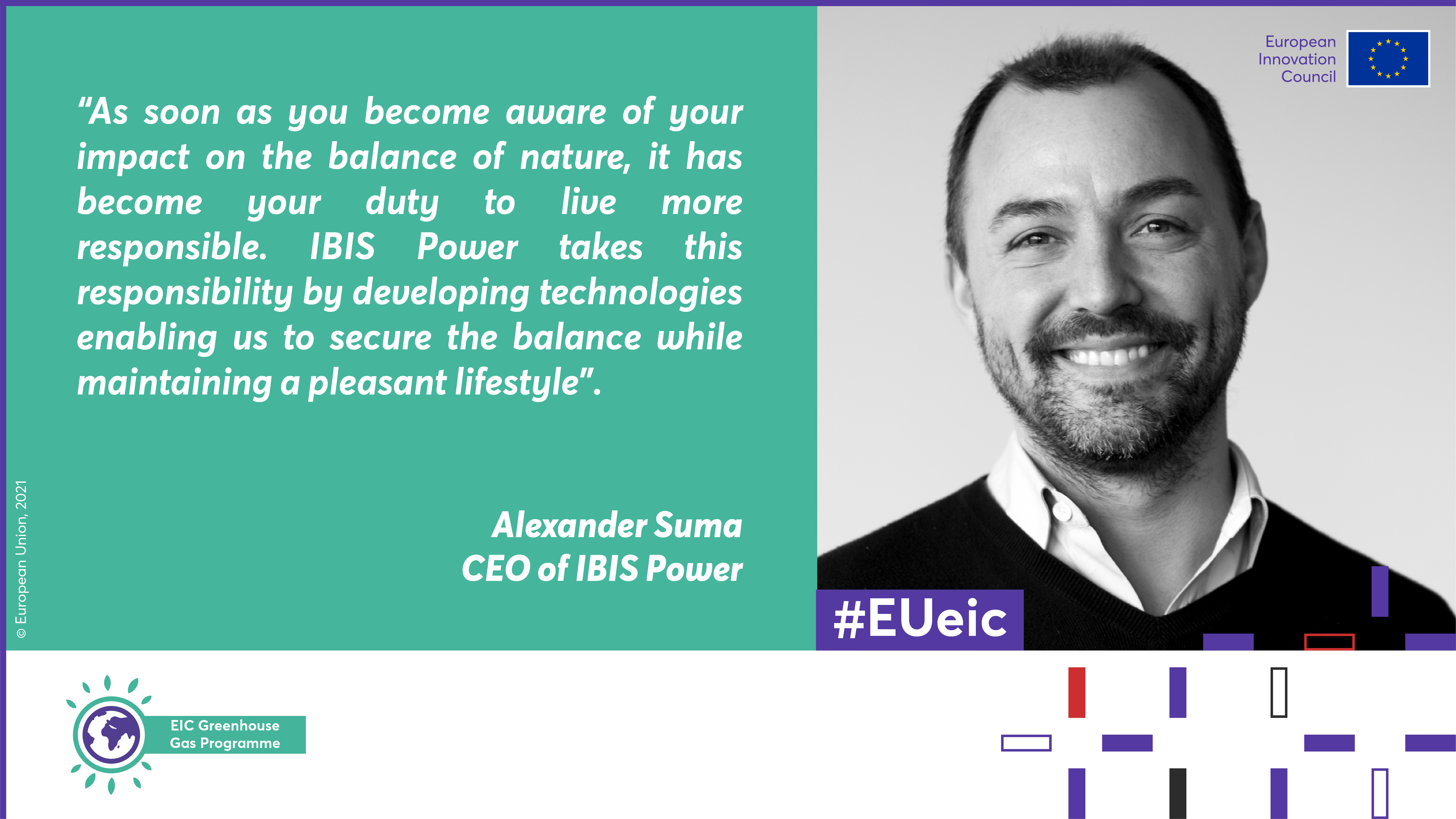More and more companies are implementing carbon reduction measures, products and innovations, but taking that step to go green can require a lot of work and effort. With the EIC Greenhouse Gas Programme, the EIC wants to further stimulate and support companies to reduce their carbon footprint. For those that still need a gentle nudge in the right direction, we gathered several inspiring EIC companies for you, innovators that are taking the motto "climate action is a business case" to the next level. In this week’s edition, we meet with IBIS Power, a Dutch-based company that wishes to live more responsibly and created modular wind and solar energies for buildings.
When disruptive and innovative renewable energy solutions are required, we turn to IBIS Power.
The company’s vision? Wanting the world running solely on renewable energy, available for everyone in every part of the world, and with solutions that fit the human lifestyle in a sustainable collaboration with nature.
With that in mind, IBIS Power was set up on the invention and commercialization of the concept of the PowerNEST, an award-winning product that has received an impressive list of over 28 grants and awards since its inception. It is no wonder that the company motto is: Redesigning Renewable Energy.
IBIS Power mission is to take state-of-the-art technology and transform it into solutions with added value towards a resilient future. That is where the PowerNEST comes into the picture – by integrating solar panels, induced cooling and Venturi accelerated wind turbines, PowerNEST generates as much energy as possible on the limited roof space of medium to high-rise buildings.
Also, by using both wind and solar energy, a single roof addition of the PowerNEST that lifts its area in 4.8 meters – no matter the roof size - generates renewable energy without producing noise, vibrations, or other disturbances. Not to mention, it can be customized to blend with a diverse range of architectural styles.
Regarding CO2 savings, these are also significant. IBIS Power strategy for market launch and scale-up in Europe has the potential to generate 131 GWh/year of local clean energy reducing 45 Megaton CO2 in 5 years and 17 Gigatons CO2 by 2030, based on all buildings of 5 levels or higher where PowerNEST can fulfil a considerable contribution to the goals of 50-55% CO2 reduction by 2030.
The company considers four design criteria in the development of their products to help them find the best balance between all parameters:
-
Highest efficiency
-
Low cost
-
Attractive design
-
Lowest carbon footprint
Due to this commitment, its market excellence gets defined by meeting key customer demands by complying with building sustainability demands, lowering energy bills, providing seasonal power availability to many building types and differentiating in aesthetical integration. Possessing a low carbon footprint and an attractive payback time, PowerNEST creates more value as an outstanding, unique, and robust solution.
Also, if the durability of this structure is something that has crossed your mind, you don’t need to worry. PowerNEST structural lifetime is 50 years, while the solar and wind energy components are replaced after 20 years, providing an opportunity for energy upgrades at a relatively low 2nd life investment.
Something that also benefits from this is the urban architectural context, which sees itself getting enriched with a novel solution that provides a new and pleasant view on sustainability. Not to mention, it is inspiring viewers to redefine it as a possibility to improve the way we live and use our cities, leading to faster implementation of locally generated sustainable energy and lower CO2 emissions.
As Alexander Suma (CEO of the company) puts it: “As soon as you become aware of your impact on the balance of nature, it has become your duty to live more responsible”. Therefore, that is why: “IBIS Power takes this responsibility by developing technologies enabling us to secure the balance while maintaining a pleasant lifestyle”.
Lastly, being a company committed to the environment that follows the Green Deal goal of zero-carbon steel making, IBIS Power is dedicating itself to reinvestigating the aluminum opportunity for its low carbon footprint and corrosion properties to further reduce the PowerNEST carbon payback time from 2.5 years to 1 year only. Something that is always valuable.

About the EIC GHG programme
With the EIC GHG programme, part of the Business Acceleration Services, the EIC offers its beneficiaries the support and expertise needed to assess, track and efficiently reduce their carbon footprint through the use of a dedicated GHG tool, monthly webinars and further support services.
In addition, co-creation activities with corporates, industrial associations, regions in carbon transition and other initiatives are currently ongoing. More information on the EIC GHG programme can be found here.

DISCLAIMER: This information is provided in the interest of knowledge sharing and should not be interpreted as the official view of the European Commission, or any other organisation.

